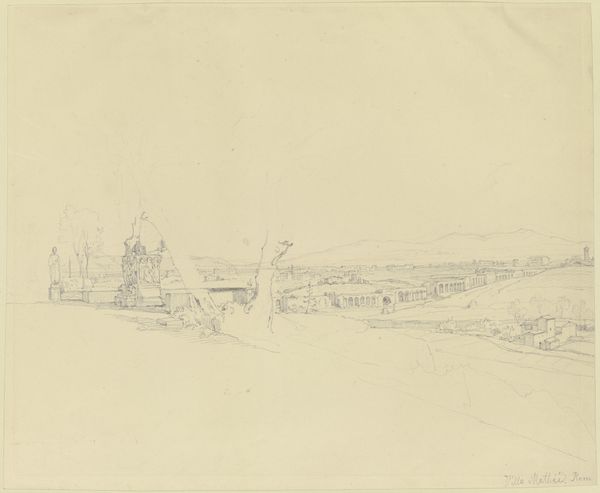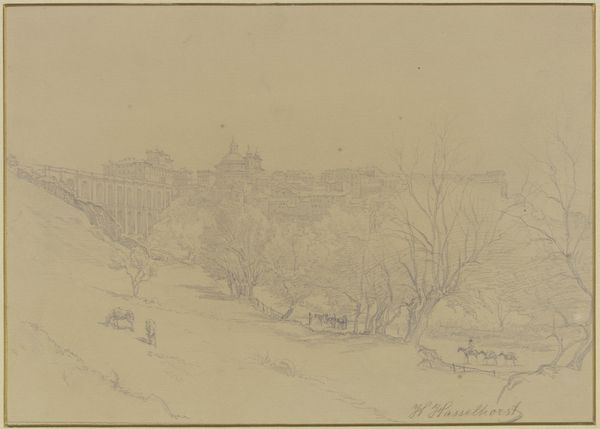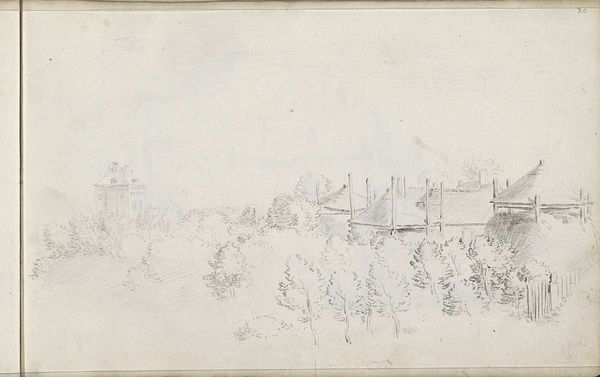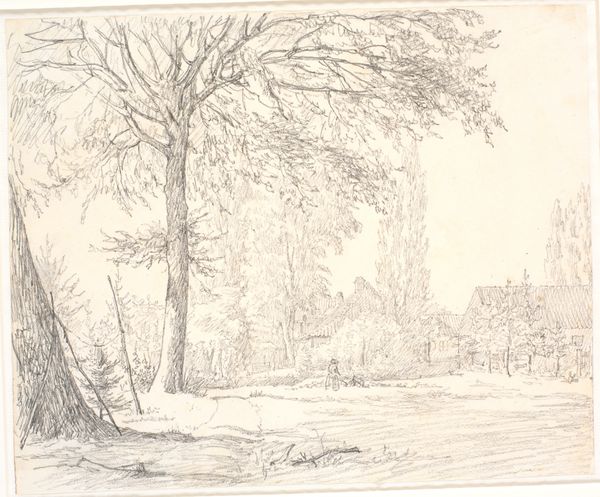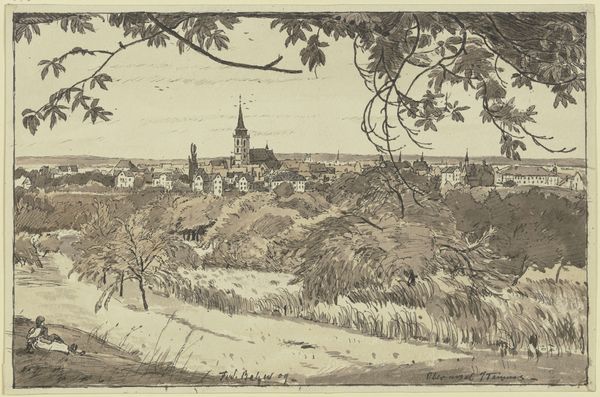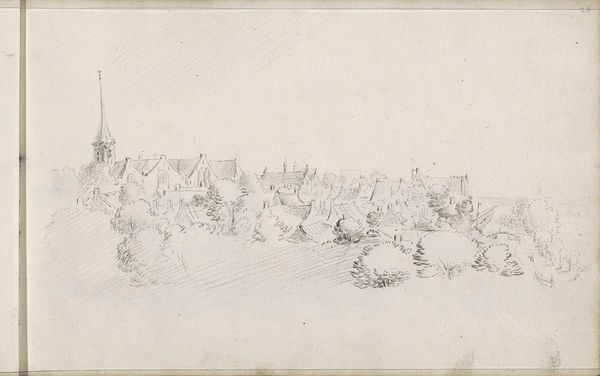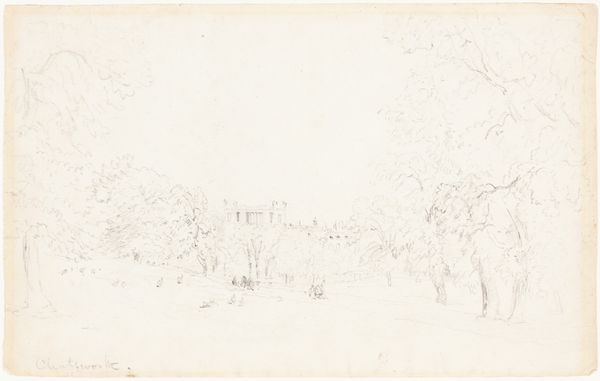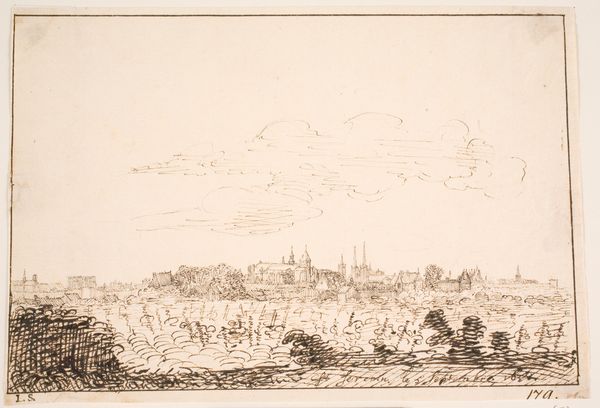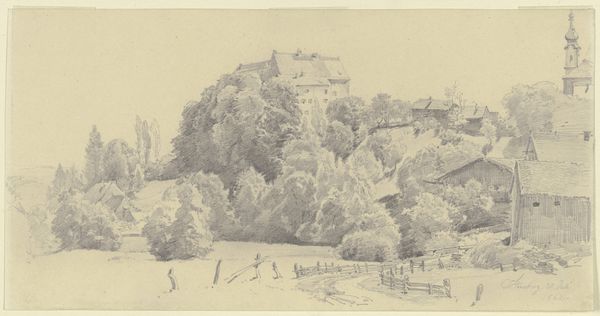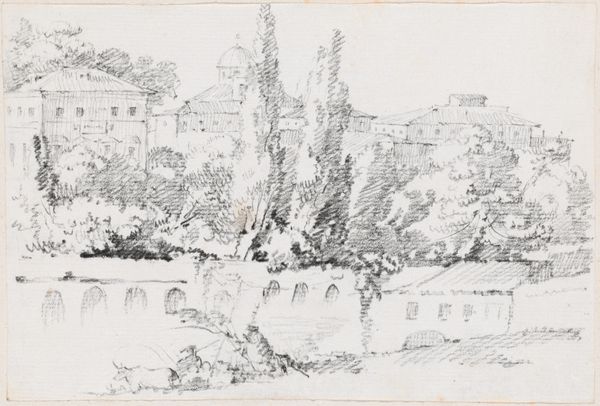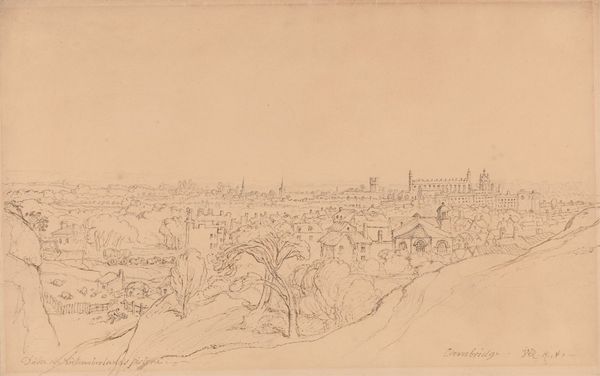
drawing, pencil
#
drawing
#
landscape
#
romanticism
#
pencil
#
cityscape
Dimensions: 196 mm (height) x 288 mm (width) (bladmaal)
Curator: Here we have "St. Knud's Church in Odense Seen from Munkemose," a pencil drawing executed in 1846 by Christen Købke, currently residing at the SMK – Statens Museum for Kunst. Editor: It strikes me as almost dreamlike, this scene. So delicately rendered, as though the artist wanted to capture a memory fading at the edges. Curator: Købke was deeply engaged with depicting the everyday life and landscapes of Denmark, imbuing them with a quiet sense of nationalism. This work reflects a broader trend within Danish Romanticism where focus shifted onto ordinary life. How did the image play into national consciousness at that time? Editor: I think its power lies in its seeming simplicity. On one hand, it presents the familiar, the accessible. A quiet, unassuming place in Denmark. But also its restraint is deceiving, this landscape aesthetic also touches on Romanticism with the cathedral representing a place and form that would be central to everyday social life. It makes it clear, this place, this community is under watch of power—religious or secular? I ask myself, did Købke appreciate or question these historical underpinnings? Curator: That’s a compelling point. Købke's technical skill here cannot be understated; look at how he uses subtle gradations in pencil to evoke a sense of atmosphere and depth. His understanding of perspective brings the church forward, anchoring the background. I wonder, how much was he intentionally staging these settings, aware of his control within the creative space? Editor: Exactly! And while we admire his artistic prowess, it's essential to view this "romantic" landscape within its societal structure of the era. In what ways might he reflect—or challenge—the Danish social codes of his time? How are we implicated by this seemingly neutral work? Curator: Indeed. "St. Knud's Church" then is both an intimate sketch and a powerful symbol, a quiet declaration of place that beckons us to contemplate its significance in the unfolding narrative of Danish identity. Editor: So while visually stunning in its subtle romantic tones, the real beauty lies in its invitation, this drawing pushes us toward an evolving and critical examination.
Comments
No comments
Be the first to comment and join the conversation on the ultimate creative platform.

